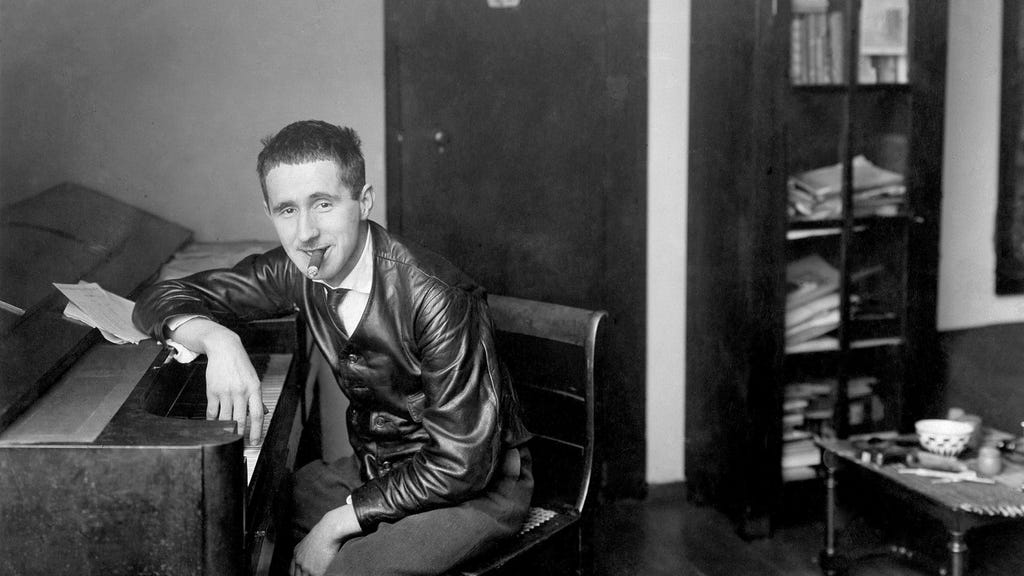Bertolt Brecht and the Shadow of Stalinism: A Deeper Examination of Artistic Legacy and Political Influence
The debate surrounding Bertolt Brecht’s political leanings, particularly his alleged Stalinist sympathies, continues to ignite passionate discussion. Martin Jonols contends that Brecht’s play, "Die Massnahme" ("The Measures Taken"), coupled with the playwright’s chilling depiction of communist comrades liquidating one of their own, foreshadowed the horrors of Stalin’s purges. He further points to the play’s eerie resemblance to the show trial of Rudolf Slánský, the Jewish leader of the Czechoslovak Communist Party, who, like Brecht’s protagonist, requested his own execution. Jonols cites historian Herbert Lüthy’s assessment of Brecht’s attraction to totalitarian authority and the "infallibility of the leader" as further evidence of the playwright’s problematic political alignment. The fact that "Die Massnahme" was performed in Moscow during Stalin’s reign of terror and its influence on Ulrike Meinhof, a founder of the Red Army Faction, further solidifies Jonols’ argument against the naïve idealization of Brecht. He calls for a critical examination of Brecht, similar to the scrutiny applied to artists who aligned themselves with Hitler.
Jonols’ critique extends beyond Brecht’s personal politics to encompass the playwright’s artistic legacy, which he views as detrimental to contemporary theatre. He argues that Brecht’s politically charged theatre, with its emphasis on didactic "learning plays," reduces the artistic potential of the stage. Jonols denounces the Brechtian tradition of transforming classic works by Shakespeare and Chekhov into dry, moralizing lessons, claiming it limits rather than expands artistic expression. He sees this “politicized theatre” as a betrayal of true artistic exploration and a constraint on creative freedom. Jonols believes that questioning Brecht’s aesthetics is not a rejection of modern theatre, but rather a rejection of the demagogic political theatre that he sees as Brecht’s enduring legacy.
Kristina Lindquist, however, challenges Jonols’ interpretation, accusing him of reiterating his original argument without addressing her counterpoints. She criticizes his literal interpretation of the "chilling, almost sadistic tone" in "Die Massnahme," arguing that it ignores the interplay of various theatrical elements that can modify and complicate the play’s message. Lindquist emphasizes the complexity of Brecht’s work and cautions against reducing it to simplistic political pronouncements. She also defends Brecht’s historical significance, suggesting that dismissing his contributions amounts to rewriting or even "retouching" modern theatre history. Lindquist highlights the evolution of theatrical theory since Brecht, acknowledging that his techniques, such as distancing effects, are no longer considered innovative in isolation. However, she maintains that Brecht’s influence remains profound and that his work continues to resonate with contemporary audiences.
The core of the disagreement between Jonols and Lindquist lies in their interpretation of Brecht’s artistic intentions and political implications. Jonols views Brecht’s work as intrinsically linked to Stalinism, arguing that his plays reflect a dangerous fascination with totalitarian power. He sees the didactic nature of Brecht’s theatre as a tool for political indoctrination, ultimately limiting artistic expression. Lindquist, on the other hand, highlights the multifaceted nature of Brecht’s work, emphasizing the importance of considering the complex interplay of theatrical elements. She argues that dismissing Brecht’s influence would be a disservice to modern theatre history and that his contributions continue to shape contemporary stagecraft.
Expanding on the nuances of this debate, one must acknowledge the historical context in which Brecht created his work. The rise of fascism and the threat of totalitarian regimes undoubtedly influenced his artistic and political views. "Die Massnahme," written in the early 1930s, reflects the anxieties and uncertainties of a turbulent era. The play’s exploration of revolutionary violence and the sacrifices demanded by ideological commitment can be interpreted as both a critique and a cautionary tale. While the play’s chilling tone and the protagonist’s self-sacrifice resonate with the later horrors of Stalinism, it is essential to avoid retrospective interpretations that ignore the complexities of the historical context. Brecht’s own evolving political views and his later criticisms of Stalinism further complicate the picture, making simplistic categorizations misleading.
Moreover, the influence of Brecht’s theatrical techniques extends far beyond the realm of overtly political theatre. His emphasis on distancing effects, breaking the fourth wall, and incorporating elements of epic theatre has had a lasting impact on stagecraft. Contemporary playwrights and directors continue to draw inspiration from Brecht’s innovative approach to storytelling, even if they do not share his political convictions. His work has challenged traditional notions of theatrical realism and opened up new possibilities for audience engagement and critical reflection. The enduring power of Brecht’s theatre lies not only in its political messages but also in its artistic innovations, which continue to inspire and provoke debate.
Finally, the debate surrounding Brecht’s legacy highlights the complex interplay between art and politics. While it is crucial to acknowledge the potential for art to be used for political purposes, it is equally important to recognize the inherent ambiguity of artistic expression. Brecht’s work, like any great art, is open to multiple interpretations and can be appropriated for various political agendas. Rather than reducing Brecht to a simplistic label, such as "Stalinist," it is more productive to engage with the complexities of his work and explore its diverse interpretations. By recognizing the nuances of his artistic and political views, we can gain a deeper understanding of the challenges and contradictions of the 20th century and the enduring power of theatre to reflect and shape our world.














